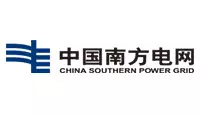Shanghai, China
+86-17317656853
inquiry@cgprotection.com






Firefighter Turnout Gear, ZFMH-CG A(DRD),Overall structure: composed of three layers: outer layer, waterproof and breathable layer, and comfortable layer; Configure life-saving towing belt.



If you need timely service, please contact us through online chat on our website
or Email: inquiry@cgprotection.com
WhatsApp: +8617317656853

| Name: | Firefighter Turnout Gear |
| Model: | ZFMH-CG A(DRD) |
| Material: | Outer layer: Nomex® and Kevlar® inter-weaved fabric Heat insulation: Aramid felt covered by FR PTFE film, waterproof and breathable Comfort layer: Nomex® and FR Viscose blend |
| Description: | Overall structure: composed of three layers: outer layer, waterproof and breathable layer, and comfortable layer; Configure life-saving towing belt |
| Function: | the outer layer fabric is carbonized and thickened under high temperature, increasing the protection between the heat source and the skin Barrier, no molten dripping,four-layer structure has good overall thermal protection performance, has extremely excellent wear resistance and tear resistance, as well as water and oil repellency, chemical corrosion resistance, etc. Combined with the waterproof and breathable layer and heat insulation layer in the middle, water droplets cannot penetrate, and it has excellent comprehensive performance. Protective performance, comfortable to wear, durable, ergonomic design, suitable for firefighters Body Protection in Fire Fighting Work |
| Standard: | EN 469:2020, XF 10-2014 |












© 2023 Shanghai C&G. All Rights Reserved.